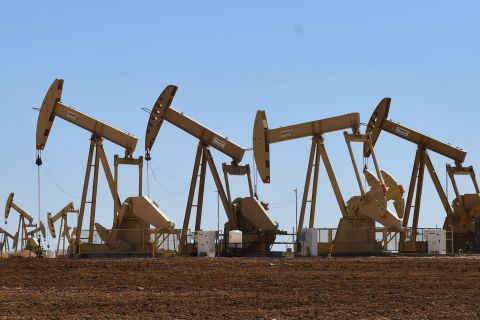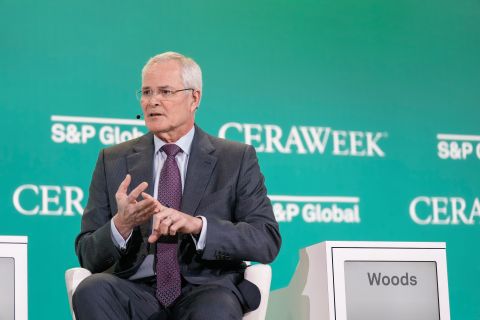Supply and demand trends for U.S. natural gas are diverging, and it will take a higher gas price to bridge the gap. It seems U.S. gas markets entered uncharted territory in the new millennium, as average annual gas prices since 2000 have been at least 50% greater than the prevailing averages of the mid- to late-1990s. This represents a new trend, rather than statistical noise. After reviewing key components of supply (U.S. production, and Canadian and LNG imports), demand (industrial, utilities and weather) and inventories, falling gas supply will likely lead to a 4% to 5% decrease in consumption in 2003. Our 2003 price estimate is currently $5 per million Btu; however, this tight market could lead to gas prices of as high as $6- to $8 per MMBtu during the summer as users attempt to refill storage. Plummeting productivity of U.S. supply is unlikely to be offset by rising LNG imports, or by Canadian gas, in the near-term. Domestic gas production has fallen 7.7% since its peak in 1998, and production likely declined by 5.4% in 2002, after a modest 0.7% increase in 2001. Despite record drilling activity in 2001, the production gains were anemic. It appears that domestic production could decline 1% to 3% annually during the next several years as producers battle increasing depletion rates. Canadian imports fell an estimated 2.5% to 3% in 2002, and will likely decline again in 2003, by 5% to 9.1 billion cubic feet (Bcf) per day. Opportunities in Western Canada are diminishing and the likelihood of maintaining production is low, as long as the industry continues to focus on shallow gas plays. Another potential source is LNG (liquefied natural gas), which would be profitable if gas prices were above $3.50 per MMBtu. Using an assumption on rising average gas prices to that threshold level or above, existing LNG terminals could significantly increase their capacity utilization while new construction will also be economically justified. One new LNG terminal will be built by 2006 to join the existing four (the last terminal was built more than 25 years ago). The impact will be small: from 1% of U.S. gas demand to perhaps 3% to 5% by 2007. Demand trends Demand rose about 2.1% in 2002, despite a 5.3% drop in supply (production plus net imports), due to a net contribution of 1.6 Bcf per day from gas in storage, compared with a net injection of 2.8 Bcf per day in 2001. This swing of 4.4 Bcf was, however, a one-time event, as 2003 demand is expected to fall 4.5%. Gas demand "should" be going up, based on expected improvement in the U.S. industrial economy, with a 1.1% increase in gas consumption for every 1% increase in industrial output, based on U.S. Department of Energy analysis. There is a widespread belief (a wish?) that industrial production will return to the 2.5% to 3% growth rate of the 1990s. If and when this happens, traditional industrial demand for gas will increase-if gas is available. Finally, the electric utility industry is set to increase capacity, 91% of which is being based on U.S. gas. For the past 12 years, the U.S. enjoyed mostly warm winters, as measured by average number of heating days for the past 30 years. In fact, the warm winters of 1994-99 must have masked the developing tightness in the U.S. gas market. It took only the modestly colder winter of 2000-01 to profoundly shake our gas market. So far, this winter actually has been warmer than the 30-year average, and yet gas prices in March were at the second-highest price ever-$9.10 per MMBtu (with some help from higher oil prices). Storage trends Total supply in 2002 (new supply plus or minus a change in storage) increased 2%. In 2003, total supply may drop 4.5% despite only a 1.3% decline in new supply: A drawdown of gas inventories ("old" supply) met nearly 3% of demand in 2002. For 2004-07, there will be very modest growth in gas supply (if any). While this past winter's weather was only 5% colder (vs. a five-year average), storage withdrawals during the heating season were 40% greater than the five-year average, despite high prices. This spring, the five-year low of 738 Bcf in storage that was reported in spring 2001 may be exceeded. How high should prices go? Perhaps there is a need to price 3 Bcf per day of demand out of the market during the next 13-14 months. Gas prices have been more than $4 since November yet demand stayed strong. Perhaps gas prices can rise beyond the 6:1 price cap against crude oil that has been believed would limit gas-price increases. Price/demand elasticity is the reliable tool for self-regulating an imbalance in the short term, while in the longer term, higher prices could stimulate higher production (particularly if environmental restrictions on drilling offshore are relaxed by the government). By our estimates, we should move to an oil-gas price ratio of about 5x or 6x (or the $4.50-per-MMBtu range). Historically, residual fuel oil has often determined the ceiling price for gas (which means a 7.5x oil-gas price ratio). When gas prices rose to that level, some customers switched to other fuels and reduced their demand for gas, thus slowing the rise in gas prices. Now, it is likely that the new ceiling price for gas will be at a 5.0x to 5.5x oil-gas ratio, which will provide an incentive for some customers to switch from gas to distillate (No.2 heating oil or diesel fuel), for heating. The key determinant of future U.S. gas prices will be the price that customers can bear, rather than the price producers need to earn for a return. This is especially true for energy-intensive and price-sensitive users such as petrochemical, fertilizer, metals, paper, paperboard and power producers. Utilities and residential sectors (two relatively gas-price-insensitive markets) account for about 25% and 22%, respectively, of total U.S. gas consumption. It will be interesting to see the response of price-sensitive consumers going through this "gas price shock" if very high prices last well into spring. Will demand reductions be achieved as a result of switching to alternative fuels, or as production shutdown decisions are made? -Tom Driscoll, Sergey Vasnetsov and Dhaval Patel, research analysts, Lehman Brothers Inc., New York
Recommended Reading
Decoding the Delaware: How E&Ps Are Unlocking the Future
2024-05-01 - The basin is deeper, gassier, more geologically complex and more remote than the Midland Basin to the east. But the Delaware is too sweet of a prize to pass up for many of the nation’s top oil and gas producers.
Life on the Edge: Surge of Activity Ignites the Northern Midland Basin
2024-04-03 - Once a company with low outside expectations, Surge Energy is now a premier private producer in one of the world’s top shale plays.
Enverus: 1Q Upstream Deals Hit $51B, but Consolidation is Slowing
2024-04-23 - Oil and gas dealmaking continued at a high clip in the first quarter, especially in the Permian Basin. But a thinning list of potential takeout targets, and an invigorated Federal Trade Commission, are chilling the red-hot M&A market.
CEO Darren Woods: What’s Driving Permian M&A for Exxon, Other E&Ps
2024-03-18 - Since acquiring XTO for $36 billion in 2010, Exxon Mobil has gotten better at drilling unconventional shale plays. But it needed Pioneer’s high-quality acreage to keep running in the Permian Basin, CEO Darren Woods said at CERAWeek by S&P Global.
Gulfport Plans Liquids-rich Program After ‘Strong’ Ohio Oil Tests
2024-05-01 - Appalachia gas producer Gulfport Energy continues to report “strong oil production” from a two-well Hendershot pad drilled in eastern Ohio last year. Gulfport plans to develop additional liquids-rich opportunities this year as natural gas prices hover near record lows.





